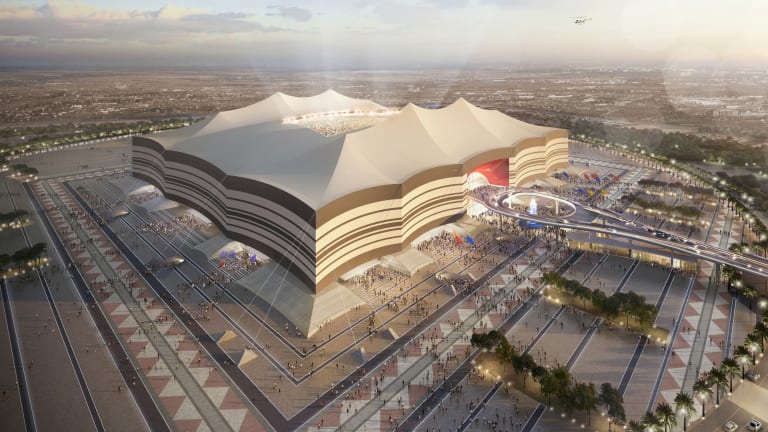Football’s world governing body FIFA announced on July 15 the fixtures of the 2022 World Cup to be held from November 21 to December 18 in Qatar. The tournament kicks off at the Al Bayt Stadium in Al Khor with hosts Qatar to start the proceedings.
The Group stages will last for 12 days with four matches per day with the last 16 to be played on December 3,4,5,6. December 9 and 10 will stage the quarterfinals while the semifinals are slotted for December 13 and 14.
🚨 2022 #WORLDCUP MATCH SCHEDULE 🚨
🏆 It all starts in Qatar on Monday 21 November 2022 🌏
🗓️👉 https://t.co/tIvYvRoy5j pic.twitter.com/yQvgGczszK
— FIFA World Cup (@FIFAWorldCup) July 15, 2020
Al Bayt Stadium

A giant tent structure will cover the entire stadium. Located in the northern city of Al Khor, the stadium will host the opening match of the FIFA World Cup 2022 and fixtures right through to the semifinals.
Khalifa International Stadium
Khalifa International Stadium has a capacity of 45,416 and reopened in May 2017 following a successful re-development to prepare it for the big event. The stadium is fully operational at present and has hosted large crowds during the ongoing Arabian Gulf Cup. In 2020, the stunning venue which is scheduled to host matches up to and including the quarterfinals will become the third tournament-ready venue ahead of 2022.
Al Thumama Stadium
Al Thumama Stadium is steeped in the culture, history and symbolism of Qatar and the region. This 40,000-seat stadium will host matches through to the quarterfinals.
Al Rayyan Stadium
Al Rayyan is known for its love of traditions and local culture, as well as its hugely popular football team, Al Rayyan Sports Club. The close-knit community here is deeply committed to the team, whose new arena will host up to 40,000 fans. Al Rayyan will welcome football fans from around the world with open arms, eager to show them the rich culture of Qatar.
Lusail Stadium
The 80,000-seat Lusail Stadium will embody Qatar’s ambition and its passion for sharing Arab culture with the world. It is here that the World Cup final will be staged, with billions around the globe watching on.
Ras Abu Aboud Stadium
The 40,000 seat venue have a remarkable design, but it will be entirely dismantled and repurposed after the World Cup. Its parts will be used in other sporting or non-sporting projects, setting a new standard in sustainability and introducing bold new ideas in tournament legacy planning. It is located on the shores of the Gulf, looking across to Doha’s dazzling West Bay skyline. Ras Abu Stadium will be a spectacular venue for 2022 matches.
Education City Stadium
The FIFA completed the virtual launch of the Education City Stadium on June 15, 2020. The stadium is the third completed venue, which has a capacity of 40,000 and is set to host matches until the quarterfinal stage of the tournament.
Al Janoub Stadium
The 40,000-capacity Al Janoub Stadium in Al-Wakrah opened on May 16 2019 with the Amir Cup final. After the FIFA World Cup Qatar 2022, Al Janoub Stadium will become a new home for sport and entertainment in southern Qatar. Its capacity will be reduced to 20,000 guaranteeing an electric atmosphere. The other 20,000 seats will be donated to football development projects overseas, once again demonstrating Al Wakrah’s innovative nature and ability to connect with far-off lands.
It is to be noted that both Al Bayt and Lusail stadiums are still under construction, although the Al Bayt ground which takes its shape from the traditional tents used by migrant peoples in the Gulf region is nearing completion.
Earlier this month several sources told AFP that World Cup organisers will lay-off an undisclosed number of staff as Qatar cuts costs due to the COVID-19 downfall of the economy. Qatar has one of the world’s highest coronavirus active cases with 109,880, 167 deaths and 106,603 recoveries.